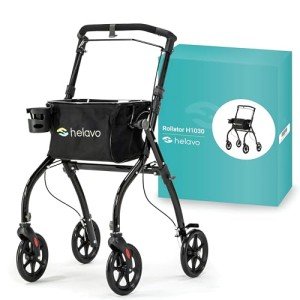The Importance of Safe Walkers: Ensuring Safety and Independence for All
As our population ages, the need for mobility assistance becomes significantly apparent. Safe walkers, often referred to as walking aids or rollators, play a vital function in improving the security and self-reliance of individuals, particularly the elderly and those with impairments. This post discusses the significance of safe walkers, their types, features to consider, and answers often asked questions about their usage.
Understanding Safe Walkers
A safe walker is a mobility gadget developed to help individuals keep balance, stability, and confidence while walking. It provides support when passing through different terrains, providing a safer alternative to relying entirely on walking canes or crutches.
Types of Safe Walkers
Safe walkers been available in different kinds, each tailored to meet various requirements. Here's a table summing up the primary types of walkers available in the market:
| Type of Walker | Description | Suitable For |
|---|---|---|
| Requirement Walker | Lightweight, fundamental structure, no wheels. | Users needing stability on flat surfaces. |
| Two-Wheeled Walker | Features two front wheels; back legs are rubber. | Individuals needing some mobility while still needing support. |
| Four-Wheeled Walker (Rollator) | Equipped with 2 or four wheels, brakes, and a seat. | Users searching for mobility and the option to rest. |
| Walkers with Seat | Comparable to rollators but mainly intended for stability. | Those who may need regular rest stops. |
| Knee Walkers | Created for people with leg injuries, allowing mobility while seated. | Suitable for post-surgery healing. |
Secret Features of Safe Walkers
When picking a safe walker, a number of features should be thought about to ensure both safety and comfort. Below is a list of essential features to search for:
- Weight Capacity: Choose a walker that accommodates the user's weight to guarantee stability and safety.
- Height Adjustment: Ideal walkers ought to have adjustable heights to offer a comfortable grip for the user.
- Wheels: Opt for walkers with appropriate wheel sizes according to terrain; bigger wheels offer much better mobility on irregular surfaces.
- Brakes: A good walker needs to have user-friendly brakes to make sure security during use.
- Foldability: A foldable design allows for easy transport and storage.
- Storage Options: Many walkers featured baskets or trays for carrying individual products, improving convenience.
- Comfortable Grips: Ergonomic deals with can avoid pain and improve control throughout use.
- Seat: If the walker consists of a seat, it ought to be durable and comfortable for resting when needed.
Benefits of Using a Safe Walker
Safe walkers use various advantages that extend beyond simple mobility. Here are some advantages:
- Enhanced Stability: Walkers provide sturdy support, decreasing the threat of falls, which are common amongst seniors.
- Enhanced Confidence: Using a walker can empower individuals to engage more actively in everyday activities, promoting independence.
- Exercise: Safe walkers motivate users to stay active, helping preserve strength, versatility, and coordination.
- Social Inclusion: With increased mobility, individuals can get involved more quickly in social events and leisure activities.
- Customization: Many walkers permit tailored adjustments to fulfill particular health requirements.
Regularly Asked Questions (FAQs)
1. How do I know if a walker is right for me or my enjoyed one?
Identifying the appropriate walker depends upon a person's mobility requirements, balance, and general health. Consulting a health care specialist can offer individualized recommendations.
2. Is it needed to use a walker inside your home in addition to outdoors?
Yes, a walker can be useful both indoors and outdoors. It can enhance stability on slippery floors or irregular outdoor courses, making it a flexible mobility aid.
3. Can I take my walker on public transportation?
Most walkers are designed to be lightweight and foldable, making them ideal for public transport. Contact particular transport services for their policies.
4. What is the typical expense of a safe walker?
Prices can differ based on the type and features. Stable Walker can cost as low as ₤ 50, while more advanced rollators can exceed ₤ 200.
5. How do I preserve my walker?
Routine upkeep includes inspecting for loose screws, ensuring wheels are practical, and cleaning it to eliminate dirt or debris. Routine checks will lengthen the life of the device.
The value of safe walkers can not be understated. These mobility devices are essential for preserving an independent way of life, improving safety, and instilling confidence in users. With multiple choices readily available, discovering the best walker tailored to individual needs can considerably enhance the lifestyle. Whether it's for individual usage or look after a loved one, investing time in picking the suitable walker is a crucial action towards making sure security and promoting an active way of life.

